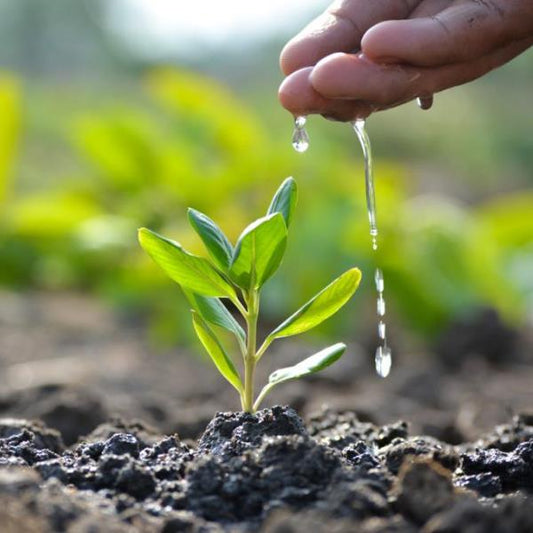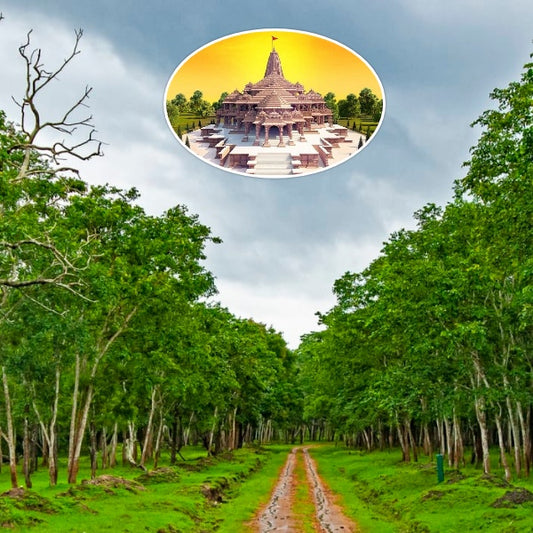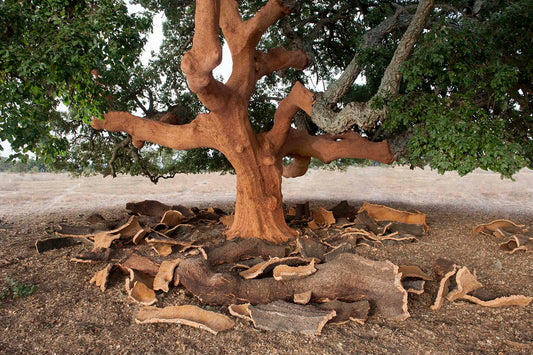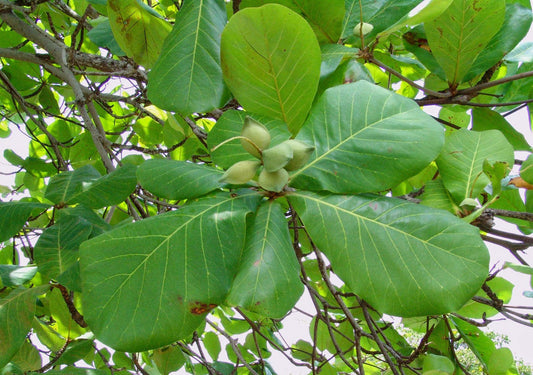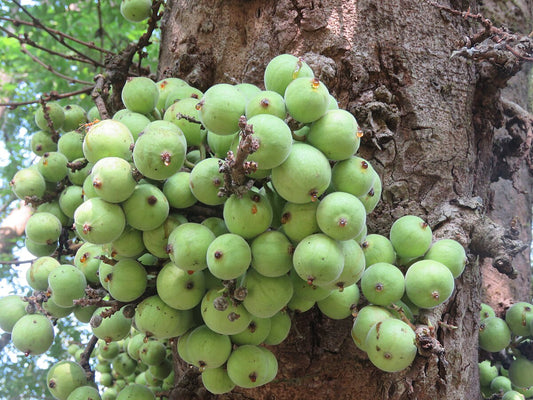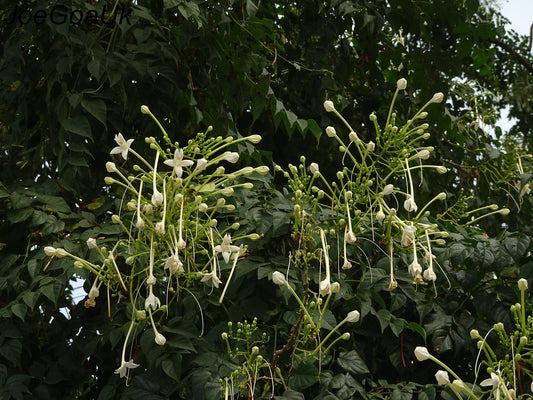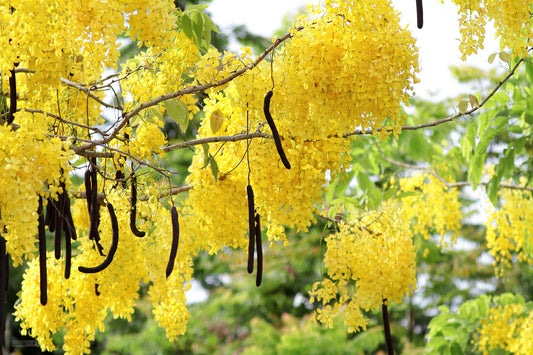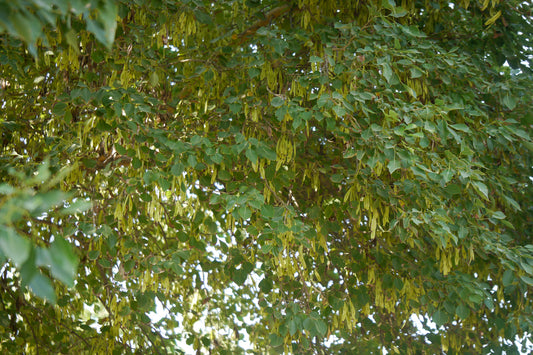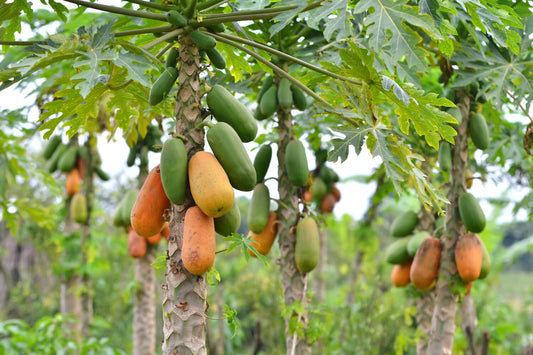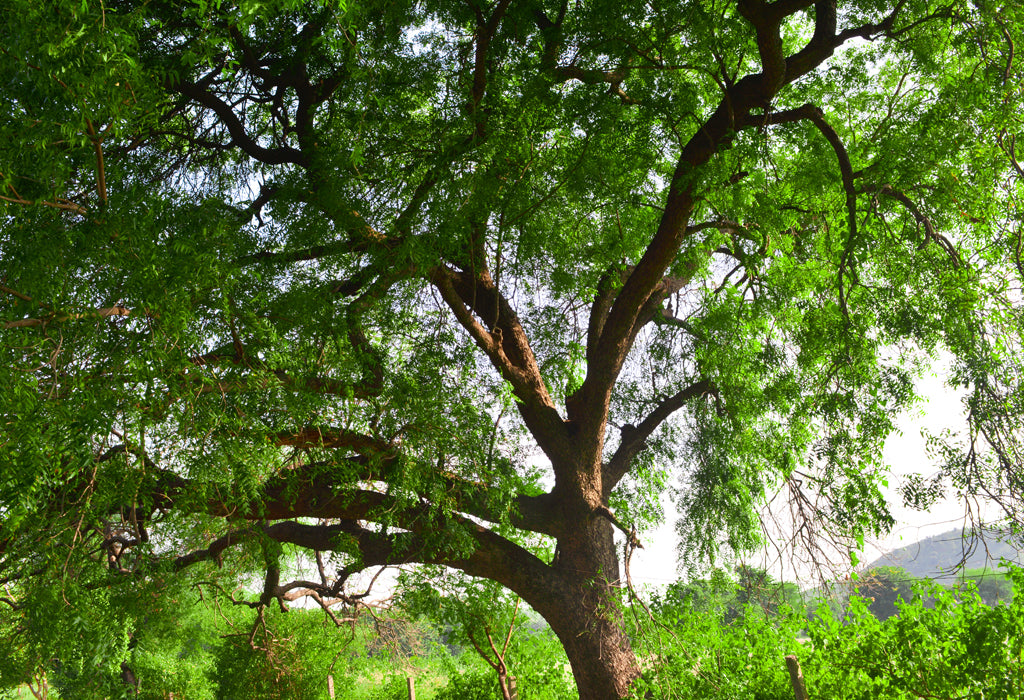

The Neem tree (Azadirachta indica) is a remarkable and revered tree known for its diverse benefits and cultural significance. Let's delve into the fascinating world of the Neem tree and explore its various dimensions. Common Name and Scientific Name: The Neem tree, scientifically known as Azadirach Read more
Trending
Trees for Corporates
Neem Tree
The Neem tree (Azadirachta indica) is a remarkable and revered tree known for its diverse benefits and cultural significance. Let's delve into the fascinating world of the Neem tree and explore its various dimensions.
Common Name and Scientific Name: The Neem tree, scientifically known as Azadirachta indica, is often referred to as the "Village Pharmacy" due to its wide range of medicinal properties.
Description: The Neem tree is an evergreen tree that can reach heights of up to 20 meters. It has a dense, spreading crown and a rough, dark gray bark. The leaves are pinnate and arranged alternately, with numerous leaflets that give it a feathery appearance. The tree produces small, fragrant white flowers and oval-shaped fruits containing a single seed.
Habitat and Distribution: The Neem tree is native to the Indian subcontinent and is found throughout India, from the Gangetic plains to the coastal regions. It is well adapted to a wide range of climatic conditions, thriving in arid and semi-arid regions.
Cultural and Historical Significance: The Neem tree holds immense cultural and historical significance in India. It has been mentioned in ancient Indian texts, such as the Vedas and the Ayurvedic scriptures, dating back thousands of years. Neem has been revered as a sacred tree and is often associated with divinity and healing.
Ecological Importance: The Neem tree plays a crucial role in maintaining ecological balance. Its dense foliage provides shade, reducing soil erosion and protecting the soil from harsh sunlight. The tree's flowers attract pollinators, supporting the diversity of insect life. The fallen leaves decompose, enriching the soil with organic matter and nutrients.
Medicinal and Herbal Uses: Neem is renowned for its medicinal properties and has been an integral part of traditional Ayurvedic medicine. It is known for its antibacterial, antifungal, antiviral, and anti-inflammatory properties. Various parts of the tree, such as the leaves, bark, seeds, and oil, are used to treat a wide range of ailments, including skin disorders, digestive issues, and respiratory conditions.
Nutritional Value: Neem leaves are rich in nutrients and bioactive compounds. They contain vitamins, minerals, antioxidants, and flavonoids that contribute to overall well-being and vitality. Neem leaves are often consumed as a herbal tea or incorporated into culinary preparations.
Symbolism and Cultural Uses: Neem holds deep symbolic significance in Indian culture. It is associated with purity, protection, and prosperity. Neem leaves are used in religious rituals, festivals, and auspicious occasions. They are also hung near doorways to ward off evil spirits and promote positive energy.
Conservation Status: The Neem tree is not considered endangered and is widely cultivated in various parts of the world. However, habitat destruction and unsustainable harvesting practices pose threats to its natural populations. Conservation efforts focus on promoting sustainable cultivation and raising awareness about the tree's importance.
Interesting Facts:
- Neem trees can live for over 200 years, making them long-lasting and resilient.
- Neem oil, derived from the seeds, is used as a natural pesticide and insect repellent.
- Neem twigs are traditionally used as natural toothbrushes due to their antimicrobial properties.
In conclusion, the Neem tree stands tall as a testament to the remarkable gifts of nature. Its medicinal properties, ecological importance, and cultural significance make it a cherished and revered tree. Let us continue to appreciate and protect the mighty Neem tree, ensuring its legacy for future generations and celebrating the wonders of the natural world.
You may also like
Corporate Plantations
Introduction to Neem Tree
Provide a brief overview of the Neem tree, including its scientific name (Azadirachta indica) and its significance.
Historical and Cultural Significance
Discuss the historical and cultural importance of the Neem tree, including its use in traditional medicine, religious rituals, and folklore.
Botanical Characteristics
Describe the physical characteristics of the Neem tree, such as its height, leaves, flowers, and fruits.
Medicinal Uses
Explore the various medicinal properties of Neem, including its role in Ayurvedic medicine and its uses in treating various ailments such as skin conditions, dental issues, and infections.
Environmental Benefits
Highlight the environmental benefits of the Neem tree, such as its role in soil conservation, carbon sequestration, and its ability to thrive in arid conditions.
Commercial Applications
Discuss the commercial applications of Neem, including its use in agriculture (as a natural pesticide), cosmetics, pharmaceuticals, and personal care products.
Neem Oil
Explore the extraction process and uses of Neem oil, including its effectiveness as a pesticide, insect repellent, and skincare ingredient.
Culinary Uses
Touch upon the culinary uses of Neem, such as its use in traditional dishes, teas, and condiments, albeit its bitterness.
Neem in Modern Research
Highlight recent scientific studies and discoveries related to the Neem tree, including its potential in cancer treatment, diabetes management, and as an antimicrobial agent.
Cultivation and Conservation
Provide guidance on how to cultivate and care for Neem trees, as well as efforts aimed at conserving and preserving Neem forests.
Myth-busting and Misconceptions
Address common misconceptions or myths surrounding the Neem tree and clarify any inaccuracies.
Future Prospects
Discuss the future prospects of the Neem tree, including its potential role in sustainable agriculture, healthcare, and environmental conservation efforts.
FAQ
What is the Neem tree and where is it found?
The Neem tree, scientifically known as Azadirachta indica, is an evergreen tree native to the Indian subcontinent. It is commonly found in countries like India, Bangladesh, Pakistan, and Nepal.
What are the medicinal uses of the Neem tree?
The Neem tree has a long history of traditional medicinal use. It is known for its antibacterial, antiviral, antifungal, and anti-inflammatory properties. Neem leaves, oil, and bark are used in various remedies to treat skin disorders, digestive issues, respiratory conditions, and infections.
How is Neem oil extracted and what is it used for?
Neem oil is extracted from the seeds of the Neem tree through a process called cold-pressing. It is widely used in cosmetics, skincare products, and agriculture. Neem oil is known for its insecticidal properties and is used as a natural pesticide, as well as for treating scalp conditions, promoting hair growth, and moisturizing the skin.
What are the environmental benefits of the Neem tree?
The Neem tree offers several environmental benefits. It acts as a natural air purifier by absorbing carbon dioxide and releasing oxygen. It helps prevent soil erosion and desertification due to its extensive root system. Additionally, Neem leaves and extracts are used as organic fertilizers and biopesticides, reducing the reliance on chemical alternatives.
Can Neem products be harmful to humans or animals?
Neem products are generally safe for humans and animals when used as directed. However, like any natural product, some individuals may have allergic reactions or sensitivity to Neem. It is advisable to perform a patch test before using Neem products topically, and consult a healthcare professional if any adverse reactions occur.
Can Neem trees be grown in other parts of the world?
While Neem trees are native to the Indian subcontinent, they can be grown in other tropical and subtropical regions with similar climatic conditions. Neem trees have been successfully cultivated in parts of Africa, the Americas, and Southeast Asia. Their adaptability and numerous benefits make them a valuable tree species for various regions around the world.
Most Popular
Connect with us
-
👥 Corporates
If you are looking for:
- 🌲 Tree Plantation Events
- 📊 CSR Projects
📧 corporate@growbilliontrees.com
📞 +91 9699723523
💬 WhatsApp (Only): +91 9370599291
🕒 Mon - Sat | 10am - 7pm IST
-
🧩 Tree Plantation NGOs
If you are looking for:
- 💰 Financial Assistance
- 🤝 Operational Support
📧 support@growbilliontrees.com
📞 +91 9699723523
💬 WhatsApp (Only): +91 9370599291
🕒 Mon - Sat | 10am - 7pm IST
-
🌼 Individuals
If you are looking for:
- 👥 Group Tree Plantation Drive
- 🌳 Bulk Tree Plantation
📞 +91 9699723523
💬 WhatsApp (Only): +91 9370599291
🕒 Mon - Sat | 10am - 7pm IST



